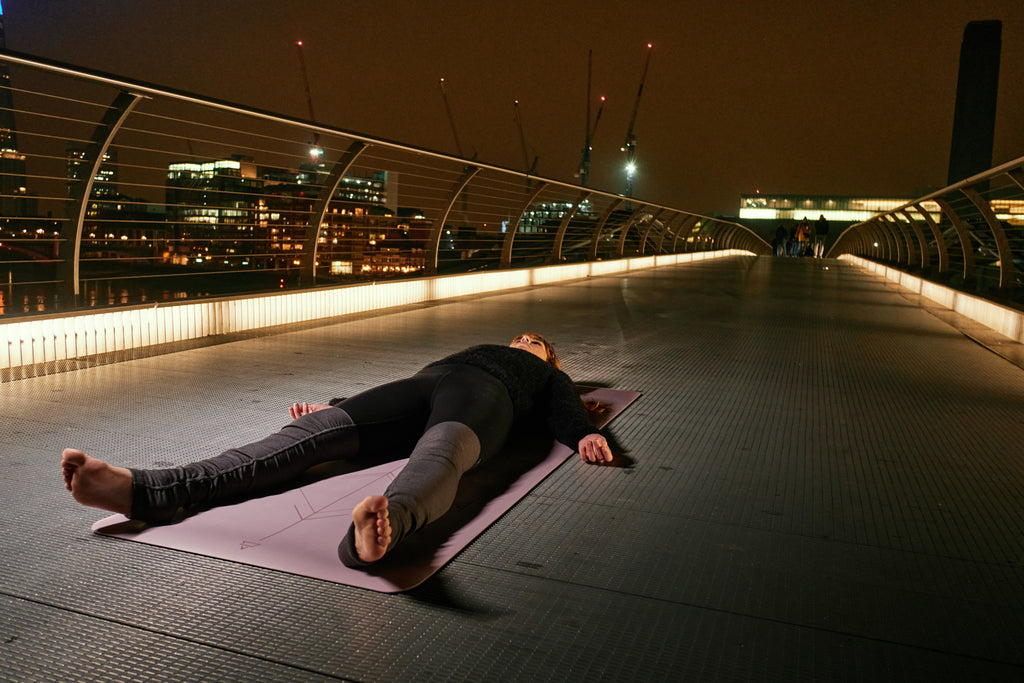Yoga is an age-old practice that has been shown to help with depression and anxiety. The poses in yoga are designed to encourage a deep, meditative state by moving the body through yoga postures.
These yoga poses will not only make you feel better but they can also teach you how to manage your stress levels so that you don’t suffer from anxiety and depression as much. In this blog post we talk about 7 yoga poses for anxiety and depression.
1. Childs Pose (Balasana)
Child’s Pose (Balansana) is one of yoga’s common resting postures and it is a nice way to gently stretch various parts of your body. It’s a chance to stop what you are doing, reassess your body, reconnect with your breath, and prepare yourself to move forward.
This pose helps to reduce fatigue by energizing the body and combating anxiety and stress.
Child’s pose restores balance to the body and helps restore your calm. Be aware to practice this pose if you have knee injury or are pregnant.
2. Fish Pose (Matsyasana)
Boost the body’s energy and fight fatigue with Fish Pose, or Matsyasana in Sanskrit, while building confidence with a loving stretch in the shoulders. It is said that if you perform Matsyasana in water, you will be able to float like a fish.
Fish pose opens the throat chest and abdomen and relaxes the neck and spine. It is a pose that is a little more advanced so be careful if it’s your first time.
The fish pose energizes your body by reducing fatigue, anxiety and stress.
3. Legs Up Wall (Viparita Karani)
Legs Up the Wall Pose (or Viparita Karani) is a restorative yoga posture that allows the mind and the body to relax, relieving stress and tension. It is one of the most approachable yoga poses as it doesn’t require much flexibility or strength. But even though it’s a passive pose, its benefits are pretty amazing. Legs Up the Wall is also an excellent, calming pose for your morning or bedtime meditations.
There’s a general consensus among modern yogis that this pose may have the power to cure whatever ails you.
4. Forward Fold (Uttanasana)
Learn to pay more attention to how you come in and out of Uttanasana and less to where you end up. Forward fold stretches the back body while relaxing the front body.
This pose is great to calm the mind, reduce stress, anxiety, depression and fatigue.
5. Downward Dog (Adho Mukha Svanasana)
Downward Facing Dog (Adho Mukha Svanasana) is the poster pose for yoga. The reason it has become the best-known asana is that it’s so important in contemporary practice. It may be the first pose you learn as you begin a yoga practice. It is done many times during most yoga classes, particularly in Vinyasa yoga. It acts as a transitional pose and can be a resting position. Downward Dog is one of the poses in the Sun Salutation sequence.
It is a great pose to energize and rejuvenate the body. This pose helps alleviate stress, depression, headaches and insomnia.
6. Corpse Pose (Savasana)
Corpse pose. This is such a restorative pose we all love it.
No yoga session is complete without a final relaxation posture. Even though Corpse Pose (Savasana) is a resting pose, it’s not the same a sleeping. You should try to stay present and aware during the five to 10 minutes you spend in final relaxation.
Savasana allows your body and mind time to process what has happened during a yoga class. It provides a necessary counterpoint to the effort you put forth during asana practice. You may also practice Savasana at home before sleeping.
Corpse pose allows you to let go and become completely still. This pose can help so many ailments and is great for everyone.
7. Easy Pose (Sukhasana)
Easy Pose — Sukhasana — is a basic seated yoga posture. It is depicted in some of the oldest images of ancient yogis in India, some of which are at least 2,000 years old. Also sometimes called “Simple Cross-Legged Pose,” Sukhasana is intended to be comfortable and calming.
Sukhasana is a simple and basic pose to come into at any time. Whenever you need to find peace, simply bring yourself to the ground and sit quietly. As you slow your breath, your mind will begin to calm down. Regularly integrate Easy Pose into your practice and into your daily life — you may notice serenity and ease flowing through all areas of your life!
There is no right or wrong way to practice yoga; you may even find new poses that work better for your symptoms after getting suggestions from other people who have also experienced anxiety or depression. Yoga can help reduce stress levels by strengthening muscles as well as increasing flexibility and bringing balance back into our lives through meditation.


Leave a Reply